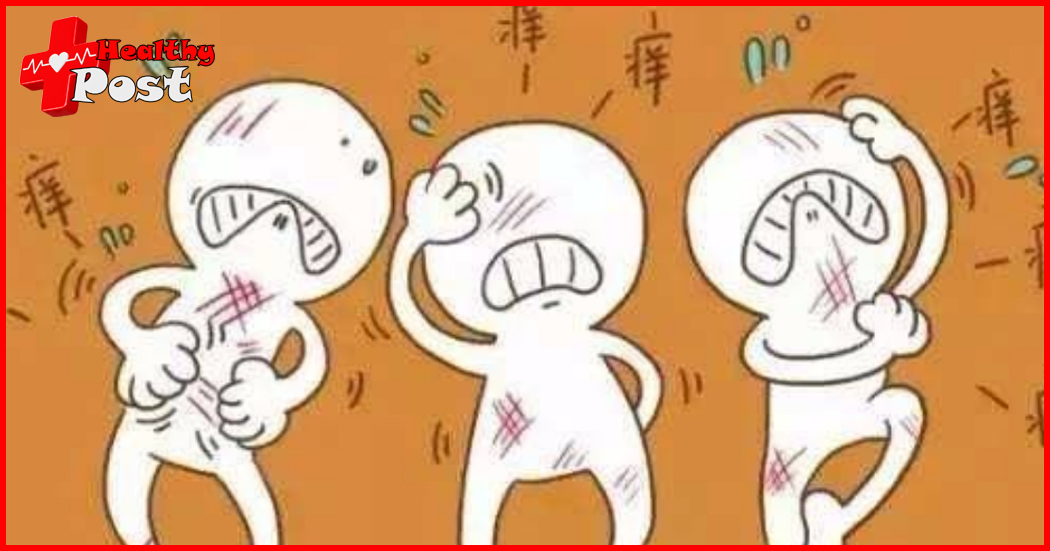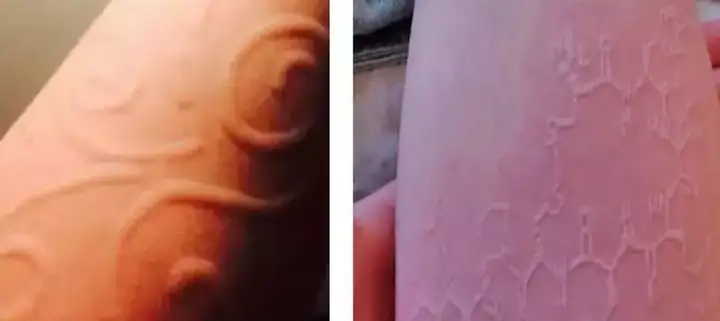
Urticaria, this may be the most beautiful skin disease in the world!
When you think of skin diseases, what can you think of? Eczema, acne, psoriasis, vitiligo… no matter which one they are, they all bring very obvious changes to the skin. Skin lesions, erythema, papules, and white spots seriously affect the beauty of the skin, and even reduce personal self-confidence, causing Certain social distress. Do all skin diseases necessarily cause skin damage, affect appearance, and cause visual discomfort? Today, I will introduce you to a skin disease Urticaria, that occurs suddenly, subsides quickly, and heals without leaving any traces.

This may be the most beautiful skin disease in the world… Use the skin as a drawing board to create various patterns. Which will automatically disappear within half an hour without leaving any traces of skin damage. Such a magical skin disease is…
It commonly known as wheals (wheals), is said to occur in about 20% of people at least once in their lifetime.
Medically speaking, urticaria is a localized edema reaction caused by the dilation and increased permeability of small blood vessels in the skin. And mucous membranes. The clinical manifestations are wheals of varying sizes accompanied by itching, and in some cases accompanied by inflammatory reactions in certain parts of the body (lips, tongue and hands), called angioedema, which occurs in about 20% of patients. May be accompanied by angioedema.
The traditional classification method of urticaria is to divide it into acute urticaria and chronic urticaria according to the duration of the disease (6 weeks). In other words, all urticaria is acute at the beginning, but as long as your urticaria has not gone away for more than 6 weeks, it falls into the category of chronic urticaria.
In addition, because the cause of urticaria is relatively complex, there are two main factors: immune and non-immune factors. Most of the causes are unclear. They may be related to factors such as food, drugs, infection, physical chemistry, systemic diseases, and autoimmunity. Depending on whether there are triggers and the triggers, Different from each other, chronic urticaria can be divided into urticaria with obvious triggering factors, autoimmune urticaria and chronic idiopathic urticaria.
Induced urticaria
According to different triggers, induced urticaria can be subdivided into artificial urticaria (skin scratching syndrome), cold contact , delayed pressure, thermal contact urticaria, solar , and vibratory. edema, cholinergic urticaria, aquagenic urticaria and contact urticaria.
Among them, the most common type of induced urticaria is artificial urticaria (skin scratching syndrome), which manifests as symptomatic wheals after scratching or rubbing. Some patients have itching before the wheals appear. Symptoms are worse at night, and the damage usually disappears within an hour.
With this magical sensitive skin, patients who like painting can try to start an artistic journey on various parts of the body, such as arms, abdominal wall, and thighs. Unfortunately, due to the metabolism of histamine in the body, these masterpieces are often kept for no more than half an hour.

Other relatively common types are cold urticaria (related to cold) and cholinergic urticaria (related to thermogenic stimuli), which is more common in young people.
However, the cause is often difficult to determine. Research shows that about 80% to 90% of it cannot find allergens or other causes through routine examinations. It is defy as chronic idiopathic urticaria (CIU). Because the cause of this disease is unknown. The disease relapses and the course of the disease is long for these patients. It causing great trouble to their daily lives.
At present, whether it is with clear triggers or chronic idiopathic urticaria. The pathogenesis is the same, and the treatment methods after removing the triggers are also the same. The most commonly used method is to use antihistamines for relief and control. Although it cannot be completely cure, standard treatment can control symptoms, reduce disease attacks, and improve quality of life.
A clinical study on chronic idiopathic urticaria (CIU) conducted in multiple tertiary hospitals is looking for adult patients with a history of “chronic idiopathic urticaria” for at least 6 weeks and at least 2 attacks per week. The drug under study is a new H1 receptor antagonist. Which has good efficacy and fewer side effects than previous antihistamines.
cold urticaria
It, also known as cold hives. It is a skin condition characterize by the rapid appearance of itchy welts (hives) on the skin after exposure to cold stimuli.
Symptoms
- Temporary itchy welts on the skin exposed to cold.
- Worsening of the reaction as the skin warms.
- Swelling of hands when holding cold objects.
- Swelling of lips after consuming cold food or drinks.
In severe cases, it can lead to:
- Anaphylaxis: A whole-body allergic reaction causing fainting, rapid heart rate, limb or torso swelling, and shock.
- Swelling of the tongue and throat, which can make breathing difficult.
Episodes typically last about two hours, and the worst reactions occur with full skin exposure. Such as swimming in cold water.
Causes of cold urticaria remain unclear, but it may be link to sensitive skin cells. It due to inherited traits, viruses, or illnesses. Cold triggers the release of histamine and other chemicals, leading to hives and systemic reactions, More articles

5 thoughts on “Urticaria, this may be the most beautiful skin disease in the world!”